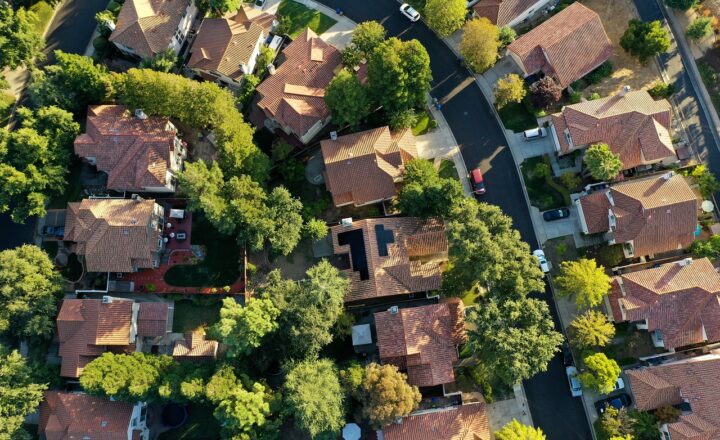How AI is Shaping Smart Cities of the Future: From Traffic to Waste Management
November 11, 2024

The advent of artificial intelligence (AI) is transforming our urban environments, creating smart cities that are more efficient, sustainable, and livable. The integration of AI technologies into city management systems has begun a revolution in various sectors such as traffic control, waste management, energy conservation, and public safety, ensuring that urban areas can adapt to the growing population and the challenges posed by climate change.
1. Understanding Smart Cities
Smart cities utilize technology and data-driven solutions to enhance the quality of life for their residents. The goal is to create an integrated urban ecosystem where information is shared in real-time, enabling improved decision-making and resource management. As more cities adopt smart technologies, the effectiveness of AI in this context is becoming increasingly apparent.
A smart city encompasses various interconnected domains, including:
- Transportation and traffic management
- Energy efficiency and smart grids
- Waste management systems
- Public safety and emergency response
- Healthcare services and management
The implementation of AI in these sectors is helping cities to optimize operations, significantly reduce costs, and improve the overall quality of life for citizens.
2. AI in Traffic Management
AI technologies are rapidly reshaping urban transportation systems. By utilizing data from various sources, traffic management systems can analyze real-time conditions, leading to enhanced traffic flow and reduced congestion. Key AI implementations include:
- Smart Traffic Lights: AI algorithms analyze traffic patterns to optimize the timing of traffic signals, reducing delays and improving flow. For example, cities like Los Angeles have implemented adaptive traffic control systems that adjust lights based on current traffic conditions, leading to a reduction in travel time.
- Predictive Maintenance: AI can predict when traffic infrastructure such as signals, signs, and road surfaces require maintenance, preventing unexpected failures and minimizing disruptions.
- Autonomous Vehicles: The integration of AI into self-driving cars poses a transformative approach to urban mobility. This technology has the potential to work in concert with existing traffic management systems, optimizing routes, and improving safety for all road users.
Through these technologies, AI is paving the way for smarter, safer, and more efficient transportation networks.
3. AI and Waste Management
Waste management is another area where AI is making significant strides. Cities face the challenge of efficiently collecting and processing waste while minimizing their environmental footprint. AI systems can enhance waste management by:
- Smart Waste Bins: Equipped with sensors, these bins can monitor fill levels and send alerts to waste collection services when they need to be emptied. This data-driven approach allows for more efficient collection routes and schedules, reducing fuel consumption and emissions.
- AI-Powered Sorting Systems: Advanced AI technologies can automate the sorting of recyclables in waste management facilities, increasing recycling rates and improving material recovery. By utilizing machine learning algorithms, these systems can learn to identify and categorize different materials more accurately than traditional sorting methods.
- Data Analytics for Waste Reduction: AI can analyze consumption patterns and waste generation, providing insights into how cities can improve waste reduction efforts and encourage more sustainable practices among residents and businesses.
By leveraging AI technologies, cities can develop efficient waste management systems that are not only cost-effective but also environmentally friendly.
4. AI in Energy Management
Energy consumption is a significant concern in urban environments, and AI is stepping in to optimize energy usage and increase sustainability. Here’s how AI contributes to energy management in smart cities:
- Smart Grids: AI systems can manage energy distribution through smart grids by predicting energy demand and adjusting supply accordingly. This makes energy consumption more efficient while integrating renewable energy sources effectively into the grid.
- Energy Efficiency Solutions: Machine learning algorithms can analyze energy consumption patterns in buildings, providing recommendations for increasing energy efficiency and decreasing costs. AI can automate building management systems to optimize heating, cooling, and lighting based on real-time occupancy data.
- Demand Response Programs: Smart energy systems can facilitate demand response strategies, allowing consumers to contribute to grid stability by adjusting their energy consumption based on pricing signals, further reducing peak demand and energy waste.
These approaches indicate that AI is crucial for enhancing the sustainability of energy systems in smart cities, effectively confronting the challenges posed by climate change.
5. Public Safety and Security Enhanced by AI
As urban areas grow, so do concerns about safety and security. AI technologies are increasingly being relied upon to enhance public safety. Here are some examples:
- Predictive Policing: By analyzing crime patterns and trends, AI can help law enforcement agencies allocate resources more effectively, preventing crime before it happens. Machine learning algorithms can analyze real-time data to predict potential criminal activities and improve response times.
- Surveillance Systems: AI-powered video surveillance systems can detect unusual behavior or potential threats in public spaces, enabling a quicker response from authorities. This technology can enhance the overall safety of citizens and promote a sense of security.
- Emergency Response Optimization: AI can assist in improving emergency response times by analyzing data on traffic patterns, weather conditions, and resource availability to deploy first responders effectively during emergencies.
Through these initiatives, AI creates a safer urban experience, fostering trust between citizens and their city officials.
6. Conclusion: The Future of AI in Smart Cities
AI’s impact on the future of smart cities is profound and multidimensional. Urban environments stand on the brink of a technological renaissance, where interconnected systems optimize every aspect of city life, from transportation to waste management, energy efficiency, and public safety. As we continue to advocate for sustainable and smart city planning, government officials, businesses, and citizens need to collaborate, leveraging the potential of AI to create cities that are not only efficient but also resilient and adaptable to future challenges.
In conclusion, embracing AI in urban planning and development will be crucial for creating livable, sustainable cities that meet the demands of the 21st century. Smart cities promise a better quality of life for their residents, and the advancements in AI technology will be at the heart of this transformation.







